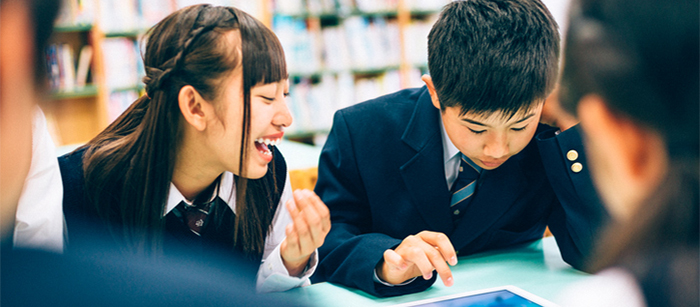In our UK offices we have recently introduced ”Dress Down Fridays”
My experiences of ”dress-down” days are all within the UK school system where uniforms are the norm. About once a term, usually to raise money for charity, students are allowed to ”dress down” and wear their normal clothes to school. As a student, dress-down days were fraught affairs, where judgement would be passed on my woefully out-of-date trainers. As a teacher, they were hard, long days. The students, freed from the uniforms, were uninhibited and the normal standards of behaviour seemed to disintegrate. There was nothing inherent about wearing jeans and trainers that would seem to cause this (although I suppose they could run faster!), but rather a subtle, almost subconscious cultural shift occurred. And apparently it’s not just the kids. Much has been written about the impact of dress-down days on productivity at work. Some employers think it encourages creativity, others think it has a more negative effect. This raises an interesting point for me: What happens when we are freed from our cultural ‘norms’?
As a teacher I was so busy planning lessons, marking students’ work and answering questions from parents that I never gave much thought to my classroom culture. However, one day I had cause to enter a colleague’s classroom during her lesson with a class we shared. I was shocked to see the normally perfectly behaved children running around and launching freshly sharpened pencils at the ceiling in an attempt to make one stick. Both of us were competent teachers. What was it about our classroom cultures that made these children behave differently in each of our classes?
The culture of the classroom is changing
The traditional blackboard is slowly becoming a thing of the past, with interactive whiteboards, virtual classrooms and active learning gaining ground. With this, the way that students interact, learn and behave is changing too. Far from being a silent, passive group, neatly arranged in rows, students are being taught to discuss, challenge and lead their own learning. Teachers are increasingly becoming facilitators rather than instructors. Thomas Gradgrind in Hard Times viewed his students as ”little pitchers before him, who were to be filled so full of facts”, and no doubt there is still a need to learn the fundamentals of a subject. However, skills such as questioning, collaboration and research are increasingly valuable.
Flipped classrooms
I recently had an opportunity to observe a science lesson in a ‘flipped classroom’. Learners linked in electronically to a wider network of classrooms, and received a short introduction to a topic from a lecturer: they had already had homework that week to research the topic by watching online videos and reading a short text. They then engaged in detailed discussions of problems given to them, Skypeing with other schools to share their ideas and find solutions. It all looked marvellous. I spoke with some of the children afterwards and most were enthusiastic. However, one boy said he felt his teacher didn’t have as much time for him anymore, and another said he often struggled with the homework as his internet connection was poor.
Flipped classrooms often rely heavily on technology and this can cause problems if students don’t have sufficient levels of access to that technology. The teacher said that she felt her work was more demanding but that the benefits made it worth while. As well as providing curated homework content, she had to really be on her feet during the lessons, providing constant, real-time feedback. She said at first it was hard work, with students coming in unprepared and demonstrating challenging behaviour. However, after a week or two, habits began to form and now the concept works quite smoothly. The culture of her classroom, and indeed her teaching practice, had changed.
Cultural change
Of course, policy doesn’t always support these new concepts, and real cultural shifts can be slow to form and only proved by sustained adoption. All too often classrooms can be turned upside down by a new approach, only to be abandoned as soon as a newer, shinier philosophy comes along. Cultural change can also be met with resistance. As Woodrow Wilson said, ”if you want to make enemies, try to change something”. But perhaps it is time to think about the culture we are creating in the classroom, and whether it is getting us where we want to be.





